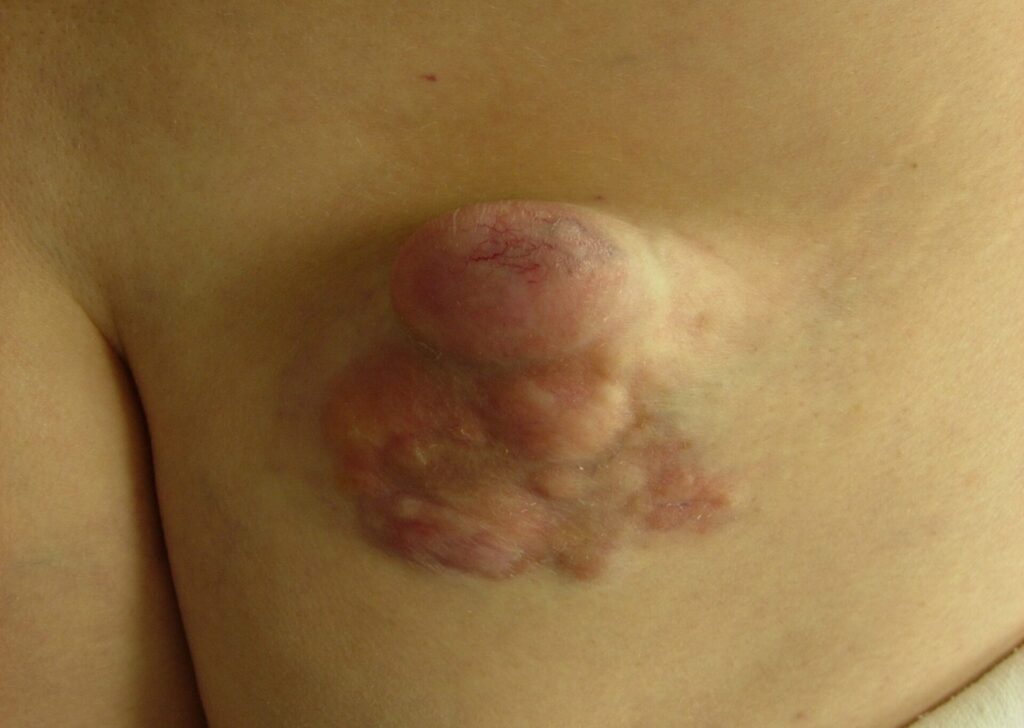Dermatofibrosarcoma Protuberans (DFSP) might not be as widely known as other skin cancers, but its unique characteristics and potential impact on health warrant attention. In this post, we’ll delve into what DFSP is, who is susceptible to it, its appearance, causes, treatment options, prognosis, and survival rates.
What is Dermatofibrosarcoma Protuberans?
Dermatofibrosarcoma Protuberans is a rare type of skin cancer that originates in the dermis, the layer of skin below the epidermis. It arises from the fibroblast cells, which are responsible for producing collagen, a structural protein in the skin. DFSP is characterized by slow, infiltrative growth and a tendency to recur if not completely removed.
Who Gets Dermatofibrosarcoma Protuberans?
DFSP can occur in individuals of any age but is most commonly diagnosed in young to middle-aged adults, typically between the ages of 20 and 50. There is no clear gender predilection for DFSP, and it can affect individuals of any race or ethnicity.
What Does Dermatofibrosarcoma Protuberans Look Like?
“DFSP typically presents as a painless, firm, raised nodule or plaque on the skin,” says Dr. Adam Mamelak, skin cancer specialist in Austin, Texas. The lesion may be flesh-colored, pink, or purplish in appearance and may have a slightly shiny or smooth surface. Over time, the tumor may grow larger and develop into a protuberant mass with a puckered or dimpled appearance.
What Causes Dermatofibrosarcoma Protuberans?
The exact cause of DFSP is not fully understood. However, it is believed to arise from genetic mutations or alterations in the DNA of fibroblast cells. Some cases of DFSP may be associated with prior trauma or injury to the skin at the site of the tumor.
How is Dermatofibrosarcoma Protuberans Treated?
Treatment for DFSP typically involves surgical excision to remove the tumor with clear margins of healthy tissue. In some cases, Mohs micrographic surgery may be utilized to ensure complete removal while preserving as much healthy tissue as possible. Radiation therapy or targeted therapies may be recommended for tumors that are difficult to surgically remove or have a high risk of recurrence.
Prognosis and Survival Rates:
The prognosis for DFSP is generally favorable, especially when the tumor is diagnosed and treated early. The likelihood of cure is high with appropriate surgical intervention, and recurrence rates are relatively low. However, if left untreated or if the tumor recurs multiple times, DFSP can be more challenging to manage and may have a higher risk of metastasis.
Conclusion:
While Dermatofibrosarcoma Protuberans is rare, its unique characteristics and potential for recurrence underscore the importance of early detection and prompt treatment. Understanding the risk factors, symptoms, and treatment options can empower individuals to seek timely medical attention and advocate for their health. By raising awareness and promoting regular skin examinations, we can work towards improving outcomes for those affected by this rare but impactful skin cancer.

